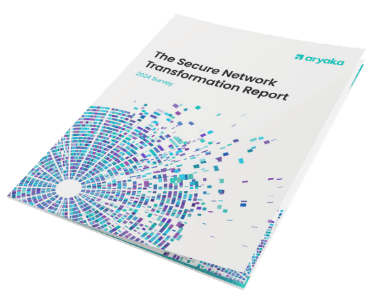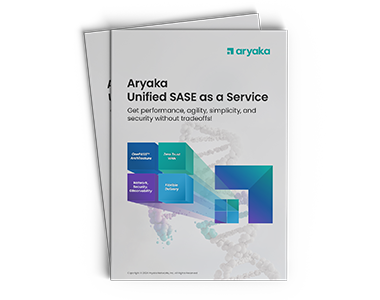Cisco + Viptela: WAN Optimization on Everyone’s Mind But Who’s Getting it Right?
It was the mid-80’s when the epic Wendy’s ‘Where’s the Beef’ commercial first aired. The catchphrase immediately took the country by storm and has been engraved into American pop culture ever since.
For those who do not get the reference, back in the 80s, the burger chain Wendy’s put out this commercial that had three elderly ladies questioning an absurdly large bun sitting on top of a peanut sized patty. The idea was to cut down the fluff and question the substance of an offering, and what precisely does it bring on the table? The vintage ad had Wendy’s taking on the problem of customer satisfaction, not by bringing in fancier buns, but beefing up their patties.

SD-WAN: Everyone Wants a Bite
Touted as the network that can think for itself, SD-WAN marks its arrival as one of the most pioneering technologies of the WAN era and has successfully grabbed the attention of all the networking honchos. A software fuelled network that gives you the ability to use all your network links and slingshot your application performance out of the latency wormhole.
While all this buzz can be attributed to an exemplary marketing strategy, it can be tough as an IT Leader of a global enterprise to leave behind your trusted legacy service provider and take a leap of faith on to the SD-WAN bandwagon. Especially, if you cannot see the ‘beef.’
Cisco viptela Acquisition
The $610 million acquisition of Viptela by Cisco in 2017 affirms the fact that the market leaders are re-thinking how WAN is done, and amping up their efforts to stake a claim in the SD-WAN market category.
This acquisition though, raised many eyebrows and the move was dubbed as Cisco’s attempt to fill the gap in their own solution. After all, it was not the first time Cisco had tried to repackage and rebrand the same old stuff. We are looking at the 1Billion+ Cisco Meraki acquisition — where Cisco is desperately trying to repackage Meraki’s firewall products for large enterprises.
If network experts like Tom Hollingsworth, organizer of Tech Field Day and an Interop ITX Review Board member are to be believed, Cisco’s IWAN is far from being a true SD-WAN and is more on the lines of trying to retrofit disparate moving parts together.
While Cisco continues to fluff up the bun there is an obvious question to be asked. Where is the beef? What functionalities rule the day? How, when, and which features will be phased out or in? How do you plan on addressing the middle-mile? What happens if the standalone product is reduced to becoming a feature in a legacy product?
Legacy Network & Solving Middle-Mile Issue
The elephant in the room that no one wants to address is the middle-mile. While a decade ago the last-mile was the bottleneck, the recent high level of global broadband penetration has raised the stake for rest of the internet infrastructure to keep up.
A recent study states that latency is largely a middle-mile issue. Yes, the last-mile is complicated too, but is extremely short compared to the middle- mile. Most of the times between the office premise to the local ISP’s network. Hence, the effects are negligible.
Middle-mile on the other hand stretches across international internet regions for connecting the edge to the current centralization points of data centers and cloud. A core network which is far from being intelligent and no routing calls are made based on application-requirements. Be it Viptela or Cisco — they are trying to solve the network equation from the edge, while the answer lies in the middle mile. If you really want to break the wheel — you got to replace the internet core with a managed network.
Some might argue in favor of MPLS. There are large service providers that position themselves as global MPLS, but their solution is far from being ‘global.’ In fact, the term ‘global’ is itself a misnomer, as it refers to MPLS providers having multiple partnerships in place that allows them to sell you a network made of different links with a single bill. This may work out well for the largest of enterprises but is prohibitively expensive for the mid-market.
So, the Cisco + Viptela alliance can toot their horns all they want but unless they re-invent the WAN, three major hurdles lie in their way.
Deployment
The global multinationals don’t just demand a network which is reliable and fast, they also want a network which is equally agile. And why blame them? After all they are shedding substantial amount to get these services. This is the first of many checkpoints where MPLS fails to deliver. Expansion is not easy and it’s undeniably not fast. In fact, setting up a MPLS line to places like India, China or Brazil can take months.
On top of it you are expected to manage and maintain the edge devices and WAN optimization hardware separately at each location. That doesn’t look much like the promised futuristic solution, does it?
Application Performance
One doesn’t need to be a rocket scientist to figure out that if your data spends a good amount of time going back and forth between the origin server and end user riding over the internet — peering through multiple networks, hopping and changing protocol routes, latency and packet loss are bound to take over the application performance. Even MPLS fails to address the performance challenges when the applications are delivered globally.
Connectivity
The Cisco-Viptela solution lacks a unified network that can stitch global sites and cloud providers together. As a result, Viptela relies heavily on installing, or using existing MPLS and internet connections — as the network. Contrary to popular belief, MPLS is not a private network service but a dynamic, shared medium, and no single provider can deliver MPLS end-to-end around the world. Global MPLS networks are mostly cobbled together using a range of service providers. This leads to service problems when issues arise and complicates the ability to provide adequate network redundancy and SLAs.
Aryaka WAN Optimization: Global SD-WAN
No hiding behind fluffy buns, no marketing rhetoric, and pure performance. Just point the router to one of our global PoPs, and board our global private network to connect to all your branch offices and cloud-based applications.
Aryaka’s global SD-WAN is the only SD-WAN that includes a global private WAN. Aryaka has 30+ points of presence (PoPs) across six continents, each less than 30 milliseconds away from 95% of the world’s business users. These PoPs are interconnected by a backbone of private network connections delivered by top service providers.

What you get is a network with MPLS-grade reliability, security, and QoS, along with WAN optimization and private connectivity to all third-party cloud platforms, like AWS and Azure as well as all the top SaaS applications.
For a free demo, click here.
- Accelerate CAD/CAM Performance
- Improve Zoom Conferencing Performance
- Calypso Embraces a SaaS-first Strategy
- CallisonRTKL Transforms their WAN
- Kleinfelder Improves Application Performance
- Teradyne Transforms their WAN
- SAP web application performance
- Kleinfelder Improves Application Performance
- Industrial Manufacturing Company Transforms WAN







